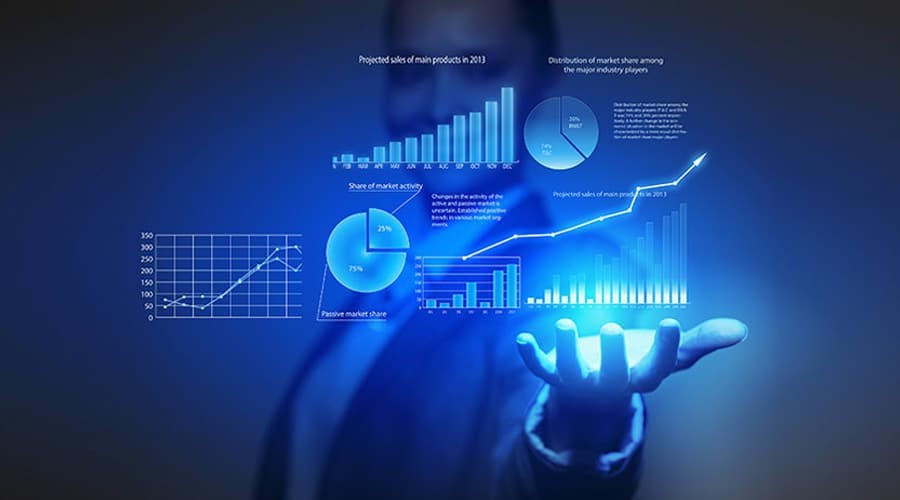As technology improves, consumers want to have instant access to services via their smartphones, regardless of where they are. Businesses also hope to simplify their offerings and make more money.
The financial industry is experiencing major changes from the traditional methods of operating due to technological advances. The rapidly changing technological landscape is fueled by significant technological advancements that will enhance the user experience and boost efficiency. In the end, those in the financial industry will have to adjust to the changing conditions or face the challenges of technological advancements.
Let’s examine five of the best IT solutions that have transformed financial services in the industry.
Table of Contents
1. Information and analysis
From an IT-related financial services solutions viewpoint Data and analytics play an essential role, similar to an engine that aids to propel a vehicle. In an information-saturated environment, financial institutions use data to provide meaningful insights to both design and interpreters of their operational landscape.
It’s a journey into the intricate universe of data, in which unstructured data is transformed into actionable intelligence.
The experience of traversing this terrain is similar to traversing unexplored territory. Financial institutions utilize analytics to study the past and anticipate future events. It’s about analyzing the financial tea leaves, recognizing patterns, and developing an advantage.
Analytics is a navigation instrument that guides institutions to not be reactive, but rather to respond actively to changes in the financial markets.
2. Modernizing apps
Let’s talk about the modernization of apps, which entails revitalizing the previously used financial applications by giving them a fresh coating of. Staying with outdated software is akin to hanging onto an old flip phone in today’s modern world of smartphones and tablets – it’s not cutting it.
Modernization of apps, also known as app modernization, is the term used to describe the transformation that banks are offering their older applications to make them more efficient as well as more effective for customers of the 21st century.
You could think of it as the process of renovating a home. Instead of tearing down the entire structure and replacing everything vital, add some function and enhance the overall comfort. That’s what banks apply to their applications. They are redesigning user interfaces, resulting in an improved user experience, and introducing cutting-edge technologies to ensure they are at the cutting edge.
3. Mobile financial services
There are estimates that there are 7.1 billion users of mobile phones around the world This number is predicted to increase to 7.49 billion in 2025. If this trend persists, the number of mobile users could be greater than the population of the world currently at around 8.1 billion.
More people now use mobile phones. Because of this, financial companies need services that are easy to access for their clients. How did they do it? Numerous finance companies have developed programs that let users access their services through mobile applications. From checking account balances to making cashless transactions or transfers. The mobile banking services have increased efficiency and cut down waiting times in banks.
Today, consumers are able to shop in the comfort of their homes and transform society into a connected and digital environment. However, it’s not just about that. Customers are also able to make bank transfers and obtain instant loans using their mobile phones.
The benefits of mobile banking don’t only apply to consumers. Banks also gain by offering these services. The more mobile customers they have, the lower their operating costs. This is especially important when leasing space. The lower the number of customers that visit the banks as a result, the less rental space required and the number of employees. This results in lower operating costs, which in turn increases the profits.
4. Solutions for cybersecurity
Although technology has enhanced efficiency and our ability to handle the majority of things, we must not overlook its downsides. One of the most pressing technological issues for the financial sector is cyber security.
In accordance with the FBI Internet criminal report, the FBI estimates that more than 800,000 cyber-related crimes are reported each year within the US alone. They estimate the loss from cybercrimes to reach $10.5 trillion by 2025. Imagine that the total loss is based on the numbers estimated for the US only.
What do financial institutions are doing to fight cyber threats and safeguard their reputation? There are many ways that financial institutions of today employ to fight cyber-attacks.
At the forefront is the application of encryption. The encryption process uses a codified language to protect sensitive information and data. These codes are difficult to break and prevent unauthorized access to information or information.
In addition to encryption, we’ve witnessed the rise in the form of security audits that are automated in order to combat cyber-attacks. Since cybercriminals are constantly changing their tactics daily, there’s a requirement that financial institutions upgrade their security measures.
Security software that is automated can check various systems for vulnerabilities. In the event of an attack from outside hackers, this program will detect potential threats ahead of time and issue alerts. This security measure allows authorities to intervene before the threat gets out of control.
5. Cloud-based computing
Cloud computing is a solid foundation for the financial services sector. Why? Finance is always moving. It twists, jumps, and turns to match the tempo that the markets go through. Cloud computing is where it comes into the picture – much like a useful volume knob. Want to know more? Make it louder. Less? Lower it. It’s all about balance.
This type of “play as you go” approach changes the game. Financial institutions can adjust their tech capabilities according to their budget and requirements. Only pay for the things you require when you require it.
Cloud computing is available in three varieties: public private, hybrid, and public cloud computing. Each one has its strengths. Banks can choose the type that best suits their needs as well as select the best instrument for the job.
Clouds with public access have plenty of resources. Private clouds offer more control and protection. Hybrid clouds mix the positive aspects of both. They can change the features they provide to keep up with bank changes is easy due to this flexibility.
Conclusion
Technology is causing a revolution in the world of finance. It is changing the landscape and creating new rules regarding the financial sector. This mix of technologies is crucial to the growth of our economy, making sure that it remains dynamic, innovative, and receptive to the needs of the market and regulations.
Wide use of such tools is expected to influence the industry of finance as we grow. This makes it more secure efficient, efficient and centered around the customer.










